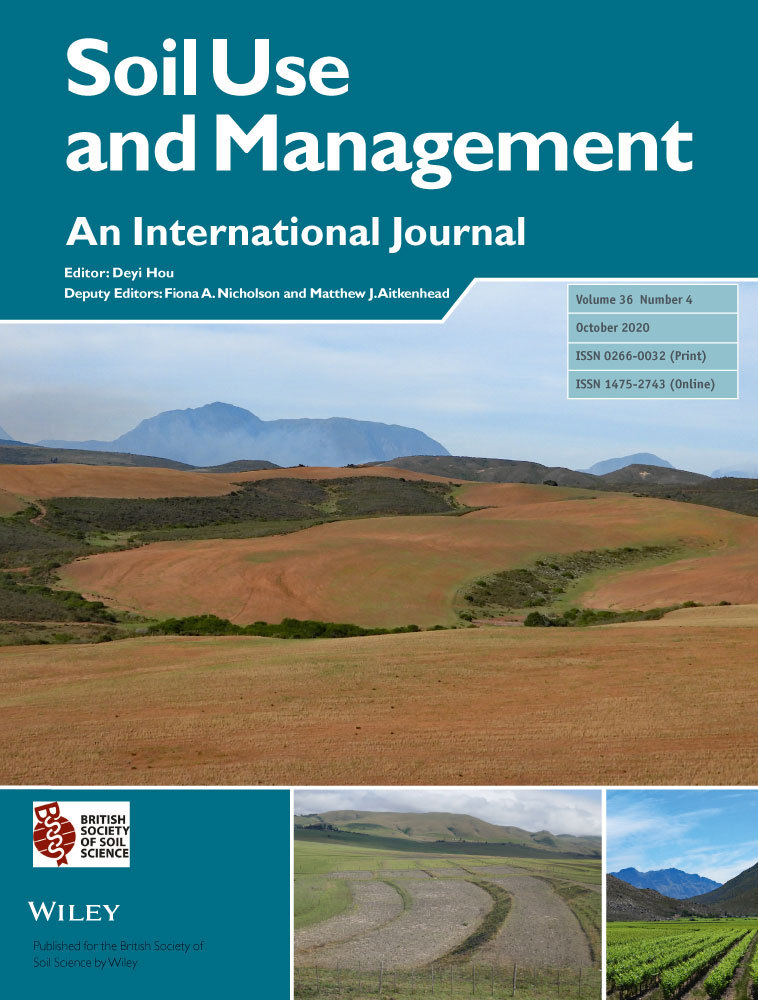Ver ítem
- xmlui.general.dspace_homeCentros e Institutos de InvestigaciónCIAP. Centro de Investigaciones AgropecuariasInstituto de Investigación Animal del Chaco SemiáridoArtículos científicosxmlui.ArtifactBrowser.ItemViewer.trail
- Inicio
- Centros e Institutos de Investigación
- CIAP. Centro de Investigaciones Agropecuarias
- Instituto de Investigación Animal del Chaco Semiárido
- Artículos científicos
- Ver ítem
Silvopastoral systems in dry Chaco, Argentina: Impact on soil chemical parameters and bacterial communities
Resumen
The Dry Chaco region is a vast plain that extends throughout north‐western Argentina. This region concentrates about 13% of the total Argentine cattle national stock. Beef cattle systems in the north‐west of Argentina are highly varied including extensive pastoral systems, silvopastoral systems and intensive grazing systems. Little is known about the impact of these systems on microbial biodiversity and soil quality in this region. This study describes
[ver mas...]
The Dry Chaco region is a vast plain that extends throughout north‐western Argentina. This region concentrates about 13% of the total Argentine cattle national stock. Beef cattle systems in the north‐west of Argentina are highly varied including extensive pastoral systems, silvopastoral systems and intensive grazing systems. Little is known about the impact of these systems on microbial biodiversity and soil quality in this region. This study describes the relationship between soil parameters (FDA, MBC, SOC, CFU, pH, TN and MR) and bacterial communities in silvopastoral systems (SPS) of the Argentine Dry Chaco region. The bacterial composition, evaluated through Illumina MiSeq sequencing of ribosomal 16S amplicons, differed between SPS and pastoral systems, being also influenced by Leucaena and Prosopis tree species. Higher diversity of bacterial populations was detected in SPS with Prosopis. The phylum Firmicutes and Bacilli class were the most abundant in all the treatments. As indicated by Mantel tests, changes in soil bacteria community were related to soil parameters (e.g. SOC and pH). SPSs are viable alternatives for improving soil quality, supported by a significant increase in microbial biomass and activity in comparison with pastoral systems. Furthermore, the different livestock systems strongly affected microbiomes. Overall, the results of the present study suggest that soil bacterial populations are involved in nutrient cycling processes in SPSs of the Argentine Dry Chaco. Further, the composition of soil bacterial communities was related to the analysed soil parameters and tree species.
[Cerrar]

Autor
Viruel, Emilce;
Fontana, Cecilia Alejandra;
Bassi, Daniela;
Puglisi, Edoardo;
Radrizzani Bonadeo, Alejandro;
Martinez Calsina, Luciana;
Banegas, Natalia Romina;
Cocconcelli, Pier Sandro;
Fuente
Soil Use and Management (First published: 22 September 2020)
Fecha
2020-09
Editorial
Wiley
ISSN
0266-0032
1475-2743
1475-2743
Formato
pdf
Tipo de documento
artículo
Palabras Claves
Derechos de acceso
Embargado
 Excepto donde se diga explicitamente, este item se publica bajo la siguiente descripción: Creative Commons Attribution-NonCommercial-ShareAlike 2.5 Unported (CC BY-NC-SA 2.5)
Excepto donde se diga explicitamente, este item se publica bajo la siguiente descripción: Creative Commons Attribution-NonCommercial-ShareAlike 2.5 Unported (CC BY-NC-SA 2.5)

